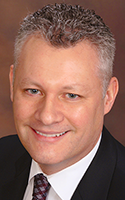Tax Tips: Bunching Deductions Using Trusts
By Jason P. Livingston, Esq.

When President Trump signed the Tax Cuts and Jobs Act of 2017 in December, that stroke of the pen ushered in the most sweeping changes to the federal tax code since the Reagan presidency. Two of the most talked about changes have been the huge increase in the standard deduction and the cap on the state and local tax deduction, known as the “SALT” deduction.
The new law almost doubles the standard deduction to $24,000 for married people filing jointly, and to $12,000 for anyone filing individually. According to the Tax Policy Center, nearly a third of all taxpayers currently itemize deductions. However, its data shows that under the new rules, a staggering 84 percent of those that previously itemized will switch to the standard deduction. The SALT deduction, once unlimited, will now be capped at $10,000 per year.
Many of that 84 percent are now planning to forego payments of certain deductible expenses for a few years in order to double or triple up on that expense in a future year — a technique called “bunching.” When bunching, you take the standard deduction in “off-years.” Then, in “on-years,” your combined expenses will be high enough to itemize your deductions. The use of tools like charitable trusts and endowment funds allow for the benefits of “bunching” deductions while still making contributions on a schedule that works for you.
This makes bunching great for deductions that you control, such as charitable contributions. But what about those you don’t control, like SALT payments?
The right trust can help here, too. By creating non-grantor trusts, each trust is considered a separate taxpaying entity eligible for the $10,000 deduction. Using multiple trusts and funding each one with assets that generate state and local taxes in amounts sufficient to use the full deduction, you can effectively relive the days of the unlimited SALT deduction.
Jason P. Livingston is an attorney serving as the head of Pullano & Farrow’s Trusts & Estates Department in Rochester. Contact him at jlivingston@lawpf.com.
